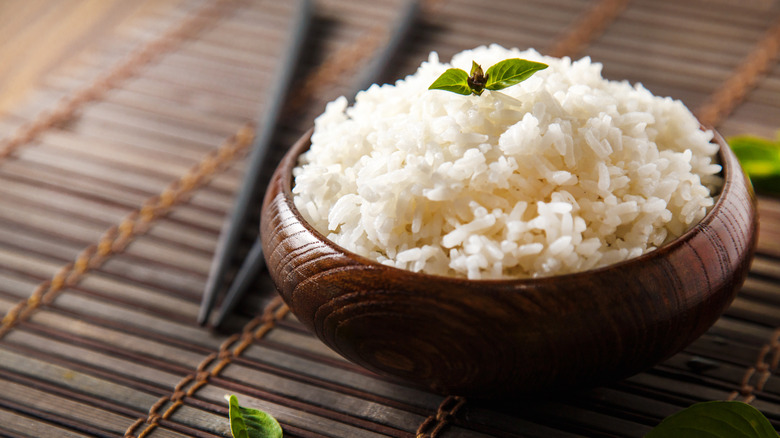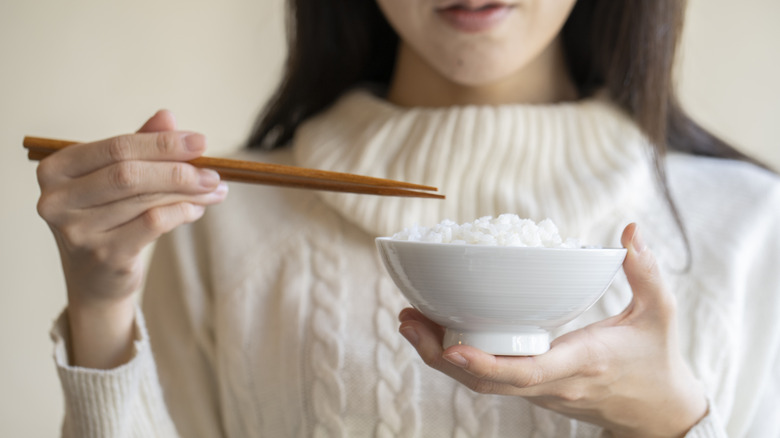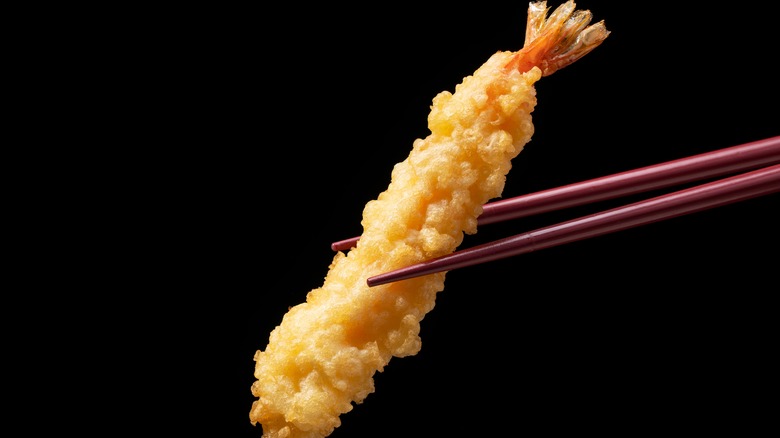How To Eat Rice With Chopsticks And Not Make A Mess
A 2023 study of Asian cuisine by Credence Research shows that the Western Market has seen an increased interest in specialty Asian restaurants as we seek more traditional Asian dishes — as well as fusion restaurants that focus on quality over quirk. Whether it is a dinner and a show at your local teppanyaki restaurant, grilling meats over hot charcoal at a Korean place, or enjoying a multi-course banquet at an upscale Chinese restaurant, there are all sorts of ways for you to encounter some sort of Asian cuisine.
Of course, two of the most common elements across all types of Eastern Asian cuisine are rice and chopsticks. The ubiquitous utensil is widely used in many regions in Asia, from Korea to Vietnam, and rice is served with almost every meal as the most common grain consumed in the continent. Before you head out to that new Japanese curry spot, it might be useful to know how to use your chopsticks to eat rice without a mess.
Depending on the type of rice, you can use chopsticks to pick up clumps of rice to bring to your mouth. Alternatively, you might want to use chopsticks to help you move the rice into your mouth from the bowl. The use of chopsticks to eat rice also depends on other factors, including serving vessels and the type of dish.
Using chopsticks to eat rice
There are two common types of rice served in Asian cuisine: short grain and long grain. Short grain rice, which is popular in countries such as Japan and Korea, is the stickier variety. To eat with chopsticks, you simply pick up the rice bowl and move it towards you, pick up a clump from the bowl with your chopsticks, and move the chopsticks to your mouth. Meanwhile, long grain rice — such as Jasmine rice — is the most common variety found in China. Since it is not as sticky, it is difficult to pick clusters up with chopsticks. So, if you are eating rice from a bowl in a Chinese restaurant, move the rice bowl with your hand towards your face and shove small clusters of rice into your mouth with your chopsticks held together.
While eating rice with chopsticks is a common practice, it is by no means universal. For example, in Korea, rice is eaten with a long metal spoon while chopsticks are used to pick up items such as meats and vegetables. Meanwhile, when rice is served on a plate, such as Japanese curry rice or fried rice, it is common practice to eat with spoons instead of chopsticks. Simply use the chopsticks to push the rice onto the spoon, and lift the spoon to your mouth.
Other chopstick related etiquette
When it comes to eating at an Asian restaurant, there are other points of chopstick etiquette you want to practice to look like you are well-versed in Asian table manners. One of the most important rules is never to place your chopsticks vertically in a bowl of rice. It is considered extremely rude and a bad omen since chopsticks standing in a bowl are visually similar to incense sticks in an urn, a common sight in Asian funerals. Instead, rest your chopsticks on the table with the eating end on the chopstick rest, or horizontally across the bowl.
It is also considered to be rude and insulting if you use chopsticks to point at someone, so if you are an expressive person who converses with your hands, put the chopsticks down before you gesticulate. Finally, if you are in a Japanese restaurant that uses disposable chopsticks, you should not rub the sticks against each other after splitting them. While you might want to eliminate splinters, you are also signaling to the restaurant owners that they do not provide quality chopsticks to their guests.



